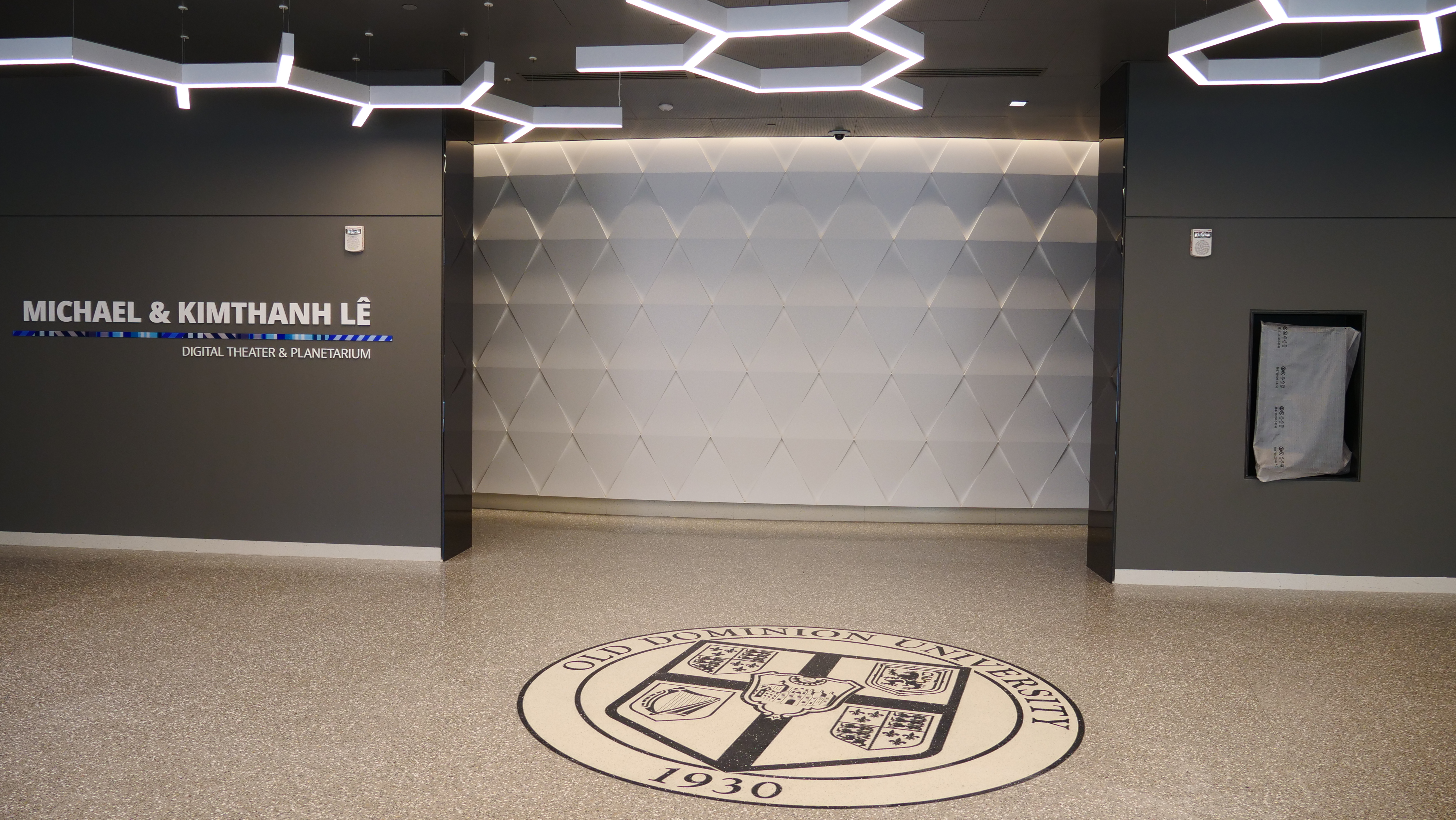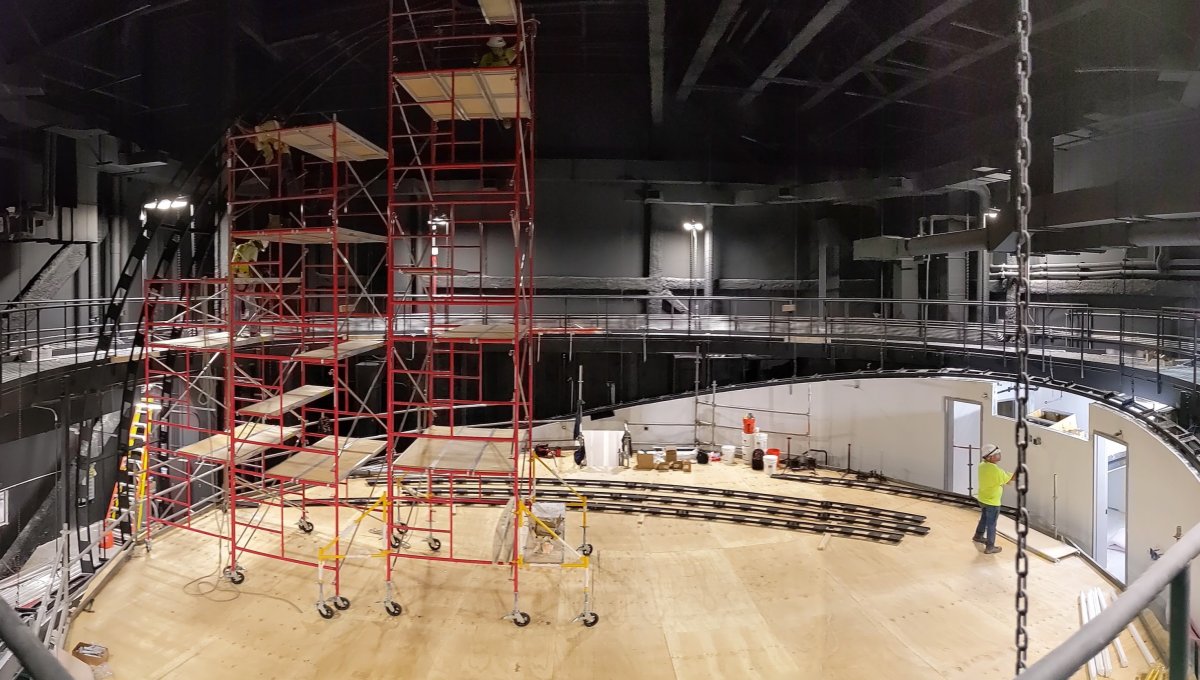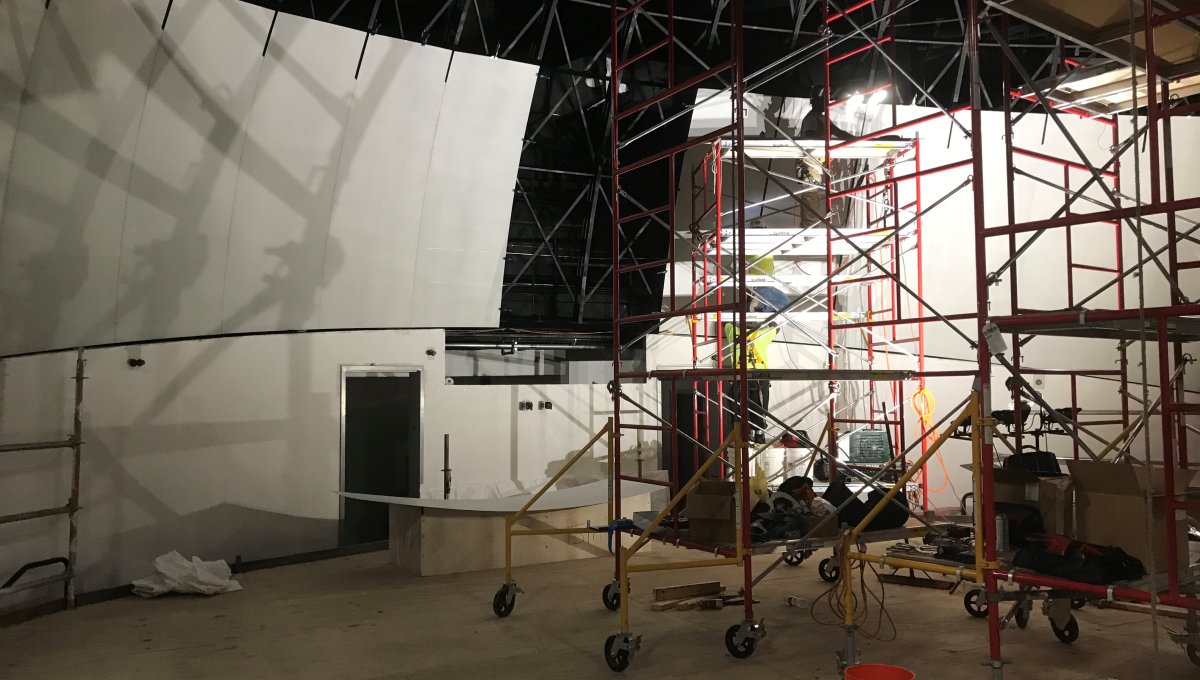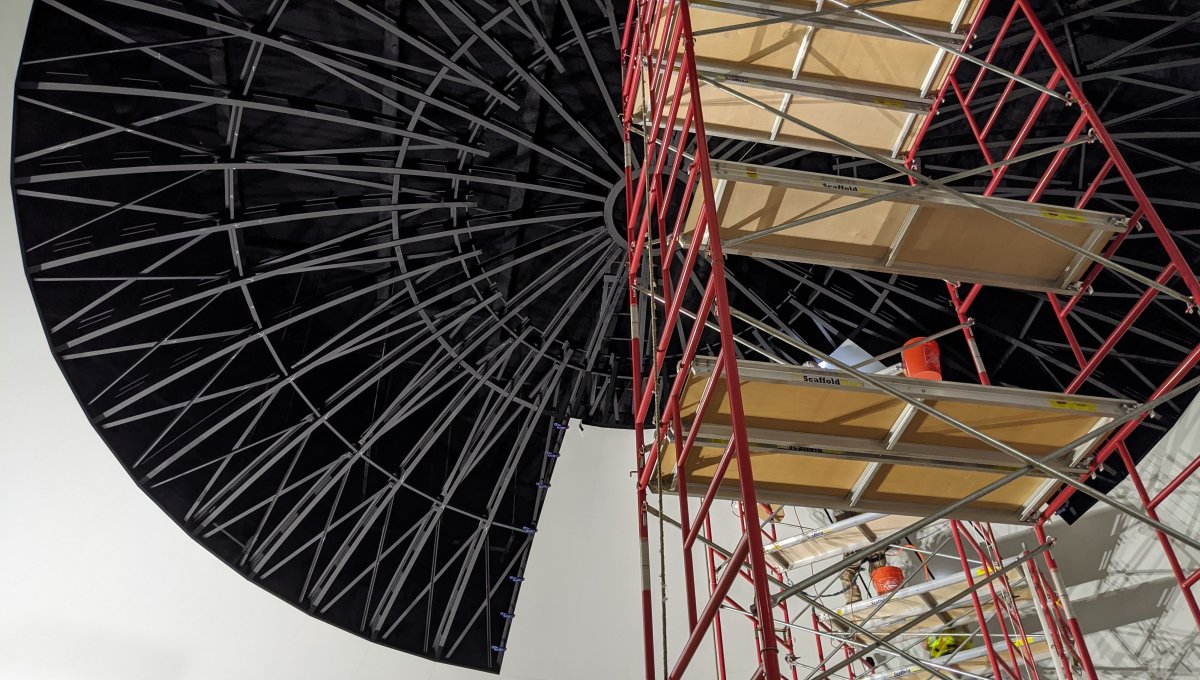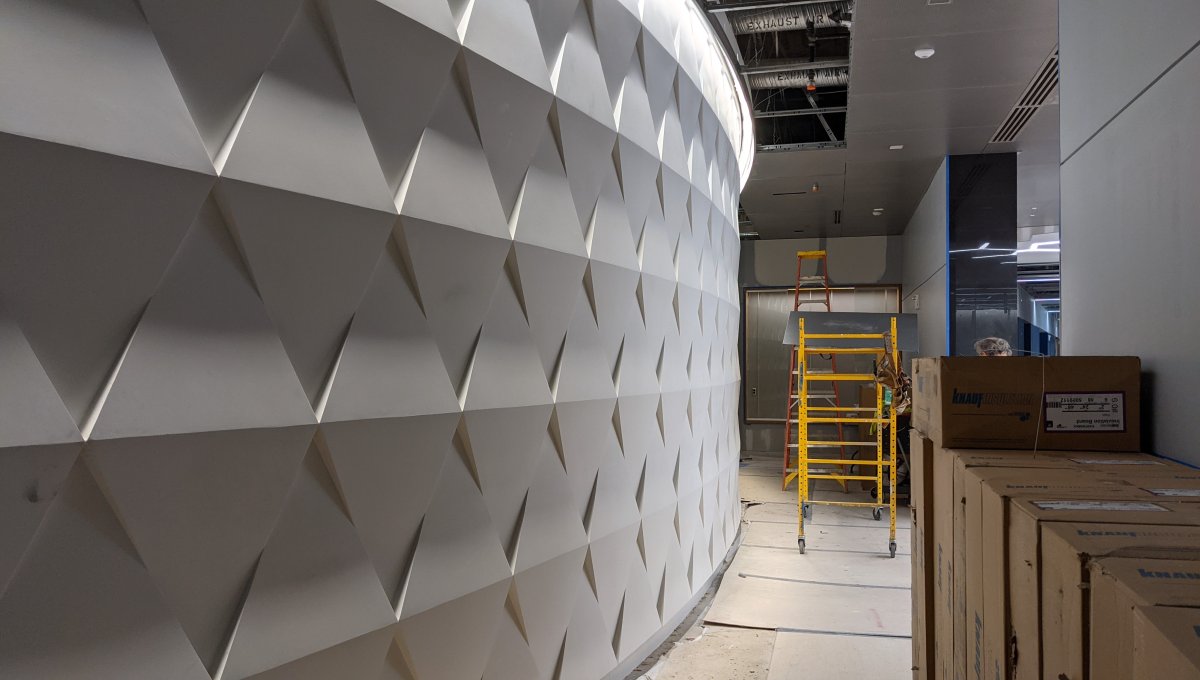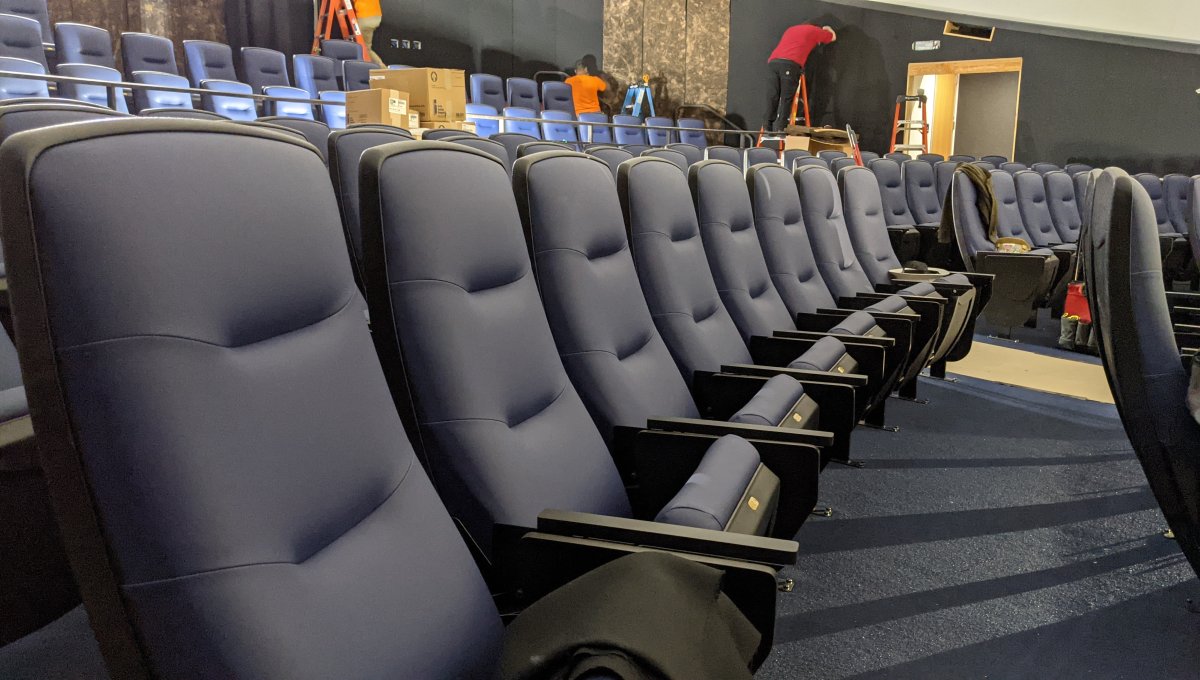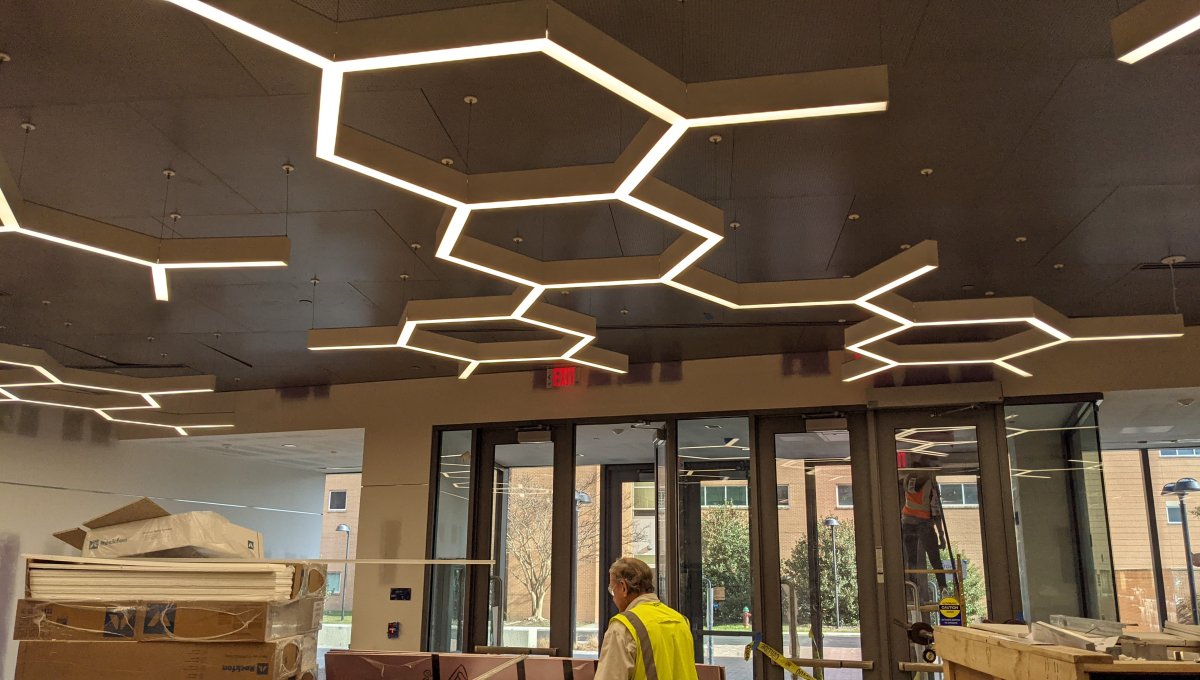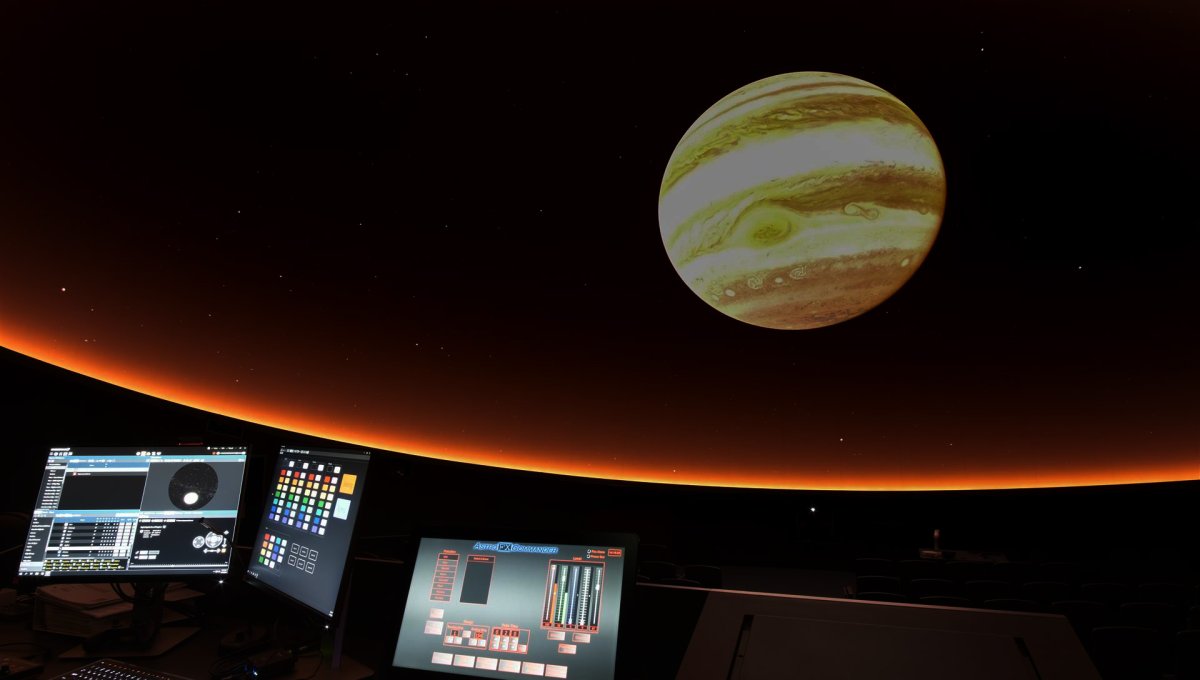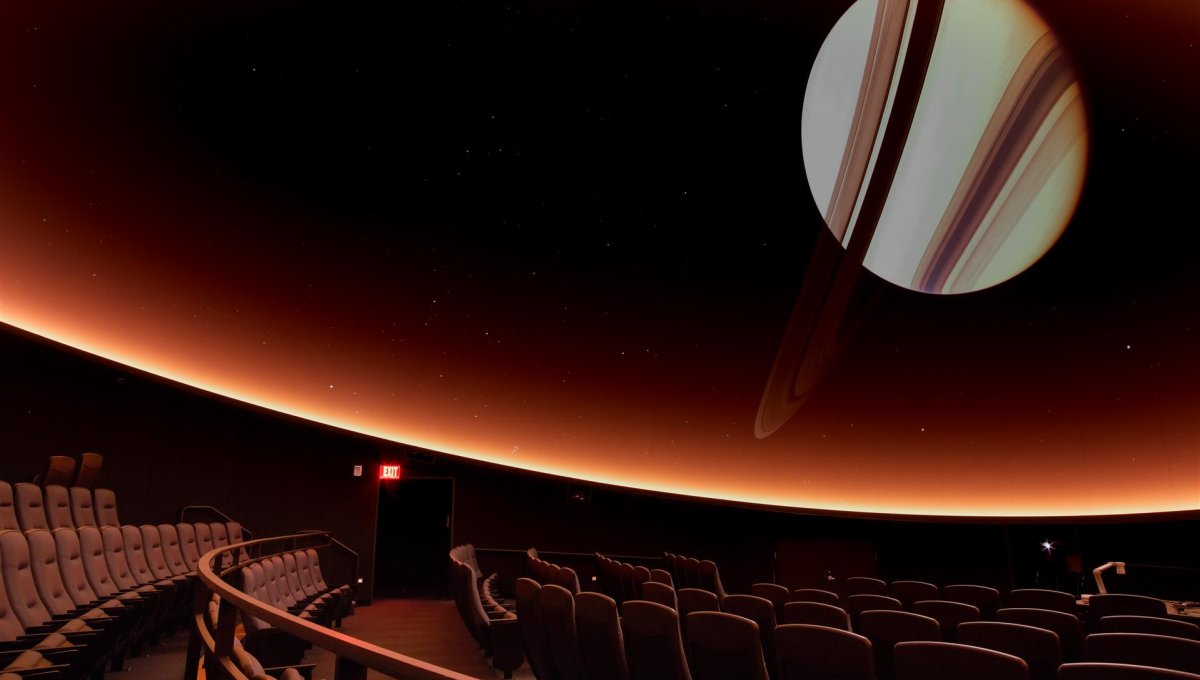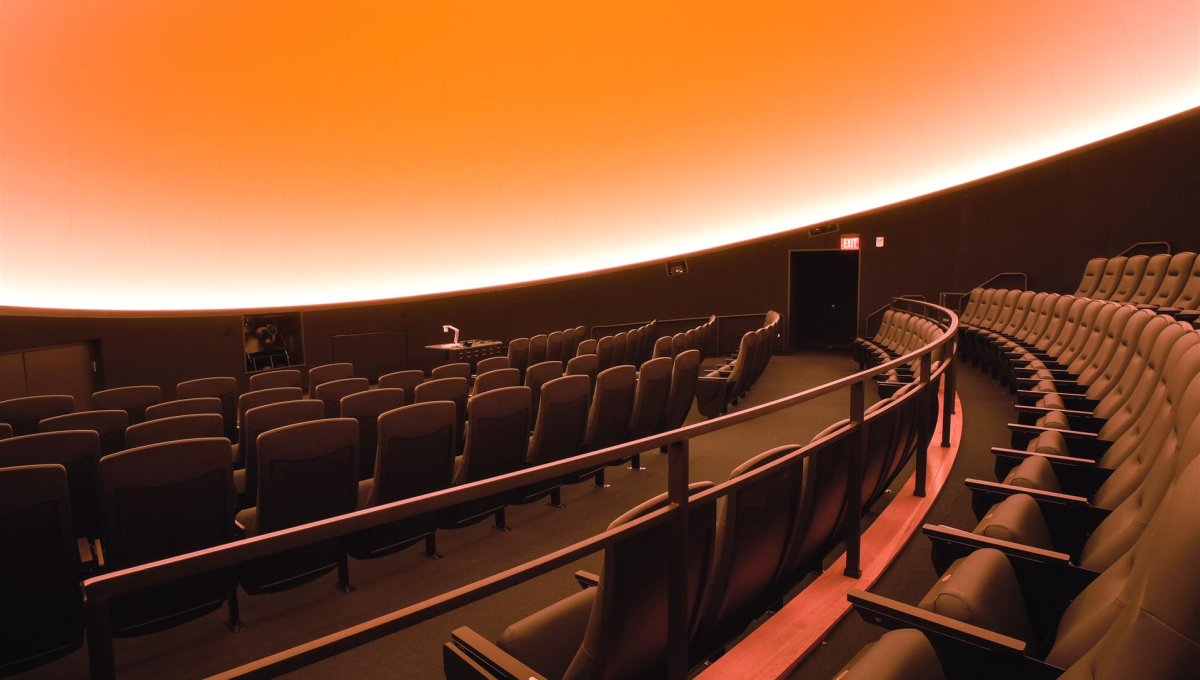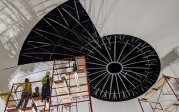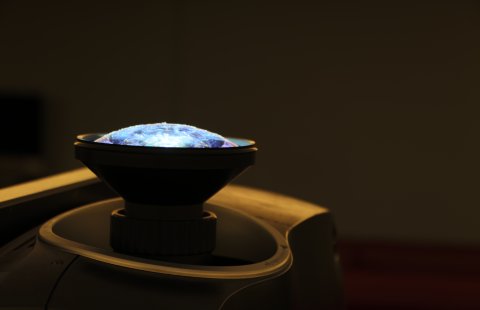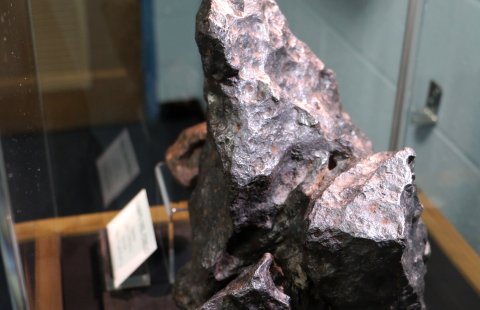Michael and Kimthanh Lê Digital Theater and Planetarium
Old Dominion University's newest planetarium is the premiere planetarium of Hampton roads thanks to donors Michael and Kimthanh Lê. Open since spring 2021, this innovative planetarium and digital theater was designed for Monarchs and for residents in the region.
Highlights
Foremost, it will serve as a planetarium, a spotlight of community outreach for ODU. It will be used as a lecture hall where it is capable of projecting 3-dimensional proteins, molecules, and more during lectures. It will operate as a symposium auditorium capable of live streaming presentations to and from remote locations all displayed on the dome in 4K resolution. It will be a truly remarkable facility for our students and the community.
But this is no ordinary digital theater. It has been designed, from the ground up, as an innovative facility capable of serving many of the University's needs. - Justin Mason
New Planetarium System
Immerse yourself in a journey through space and time in our breathtaking 122-seat planetarium. From the comfort of a plush, reclined seat you'll feel like you're flying through Earth's atmosphere to the far reaches of the universe.
- The new projection system will triple the brightness, quadruple the resolution, and extend projector lamp life by a factor of 10 compared to that of the current planetarium.
- 3D model of the Milky Way Galaxy built from the GAIA star catalog with nearly 1-billion stars.
- Project a hyper-realistic, accurate version of the night sky.
- Perform free-flight navigation through the Universe using a gaming controller.
- A Cloud Library gives immediate access to new content such as spacecraft models, renderings of planet surfaces, and animated flybys around black holes.
- Live interaction lets you draw freehand on any image on the dome.
To create new content for our shows, a production studio is included. The studio is designed to let creative professionals design and build complete full-dome shows outside of the theater. This will allow us to easily create content for each grade based on Virginia's Science Standards of Learning. Students, faculty, and staff have complete artistic control over how to build a show and can do so even while the planetarium is in use.
A more powerful Laser Show projection system will far exceed the current system's capabilities, and includes over 25 shows compared to the current 6. If you were worried about missing out on our popular Laser Pink Floyd Nights, don't worry. Laser nights will be bigger and better than ever!
In early 2019, NASA donated $70,000 worth of surplus equipment to the Pretlow Planetarium. Items include pieces of space suits from the 1980s and 1990s, a piece of the Gemini X heat shield, and a full in-flight suit.
Our meteorite collection has been steadily growing since 2017. With over $20,000 worth of meteorite fragments, our pieces range from the Chelyabinsk impact of 2013 to Libyan Desert Glass to a piece of Argentina's Campo Del Cielo weighing 63 pounds!
In honor of the 50th anniversary of the Apollo 11 Moon landing we designed and built an interactive display case where you can touch an actual piece of the Moon. This lunar meteorite was once part of the Moon, blasted into space from a large meteor collision, and eventually made it's way to Earth.
In early 2019, NASA donated $70,000 worth of surplus equipment to the Pretlow Planetarium. Items include pieces of space suits from the 1980s and 1990s, a piece of the Gemini X heat shield, and a full in-flight suit.
Our meteorite collection has been steadily growing since 2017. With over $20,000 worth of meteorite fragments, our pieces range from the Chelyabinsk impact of 2013 to Libyan Desert Glass to a piece of Argentina's Campo Del Cielo weighing 63 pounds!
In honor of the 50th anniversary of the Apollo 11 Moon landing we designed and built an interactive display case where you can touch an actual piece of the Moon. This lunar meteorite was once part of the Moon, blasted into space from a large meteor collision, and eventually made it's way to Earth.



